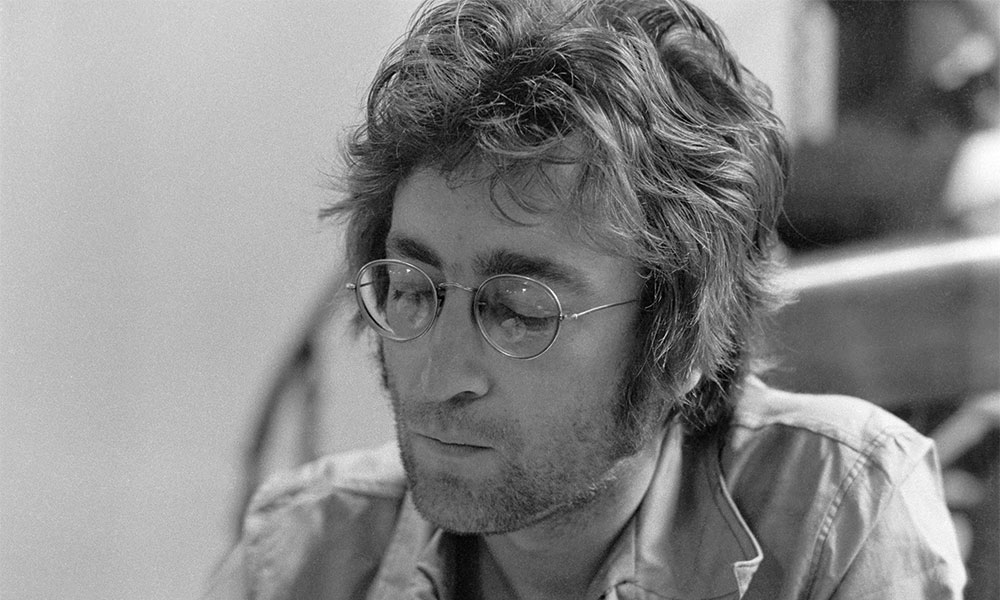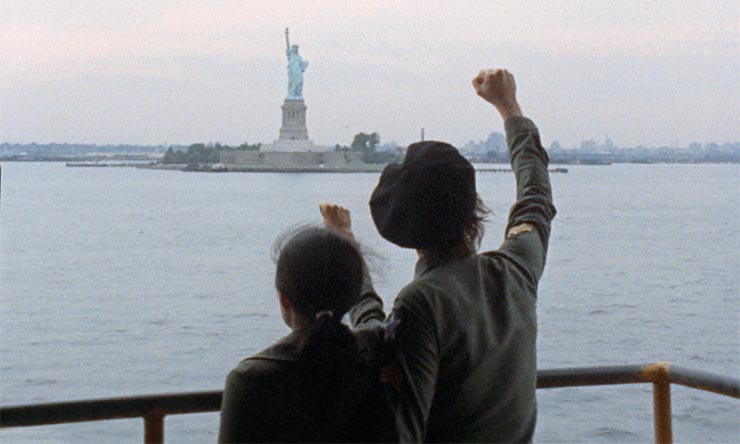
In a short, dizzying career, The Beatles totally changed what pop music could do. They challenged preconceptions in every way, from writing their own material to bringing into the mainstream ideas and recording practices that had previously lurked in arty cul de sacs. After them, pop music was taken seriously. It actually changed things. Imagine this, though: would any of that have happened without the attitude John Lennon brought to the group?
Despite his bandmates’ myriad gifts, without Lennon’s artistically mischievous, rebellious challenge to the status quo, it’s possible to imagine that The Beatles may never have existed. And without an album the likes of Imagine, his second post-Beatles album – and by far his most iconic – generations of songwriters wouldn’t have found themselves stepping up to the challenge that Lennon laid down: to be completely honest; to question everything; to continually search for the truth.
Listen to Imagine: The Ultimate Collection on Apple Music and Spotify.
Songs as public therapy
Lennon was adept at deploying songs like Trojan horses: direct, irresistible tunes the milkman could whistle that also questioned things that riled him, or gave the listener an unfiltered glimpse into his psyche. 1971’s Imagine was, in this respect, the essence of Lennon: an album full of songs that had universal appeal while remaining utterly unique to its creator. With Yoko Ono’s collaboration, the title track has achieved the sort of ubiquity traditionally associated with hymns, and the album built upon the ground that was broken by 1970’s John Lennon/Plastic Ono Band, marking Lennon as a figurehead for the burgeoning numbers of singer-songwriters inspired by his stark, vulnerable confessionals.
While John Lennon/Plastic Ono Band had looked inwards – continuing the songs-as-public-therapy thread that had informed previous Beatles outings like “There’s A Place,” “Help!,” and “Julia” – Imagine’s title track was both an aspirational prayer and a challenge to authority that remains one of the most unashamedly plain-speaking songs to enter popular consciousness.
Lennon later recalled: “The first record was too real for people, so nobody bought it. Now I understand what you have to do. Put your political message across with a little honey.” While systematically questioning the things that shaped our world (religion, nationhood, materialism), the sweetener is not only “Imagine”’s melody and production – all stately pianos and stirring strings – but the suggestion that every person listening, regardless of who they are, can imagine a better world. Together, Lennon and Ono wrote songs that thrilled in the way they railed against the ills of mankind (“Happy Xmas (War Is Over)” among them). But part of “Imagine”’s brilliance lies in suggesting how things could be better, even though the listener knows that imagination isn’t enough. The song is as much a call to action as it is an invitation to reflect.
After its release on October 11, 1971, “Imagine” had a huge impact that helped take the album it was featured on to the top of the charts. It also instantly inspired multiple cover versions: within a few years, artists as diverse as Diana Ross, Andy Williams, and Joan Baez had released their own versions. Proving its enduring influence, “Imagine” has become Lennon’s most covered songs, with those who have performed it including Ray Charles, Madonna, Elton John, and Neil Young.
In 1999, Broadcast Media Inc. named “Imagine” one of the Top 100 Songs Of The Century, and it was also a centerpiece of the 2012 London Olympics. The song was performed by Emeli Sandé during the opening ceremony and the closing ceremony, the latter of which featured a full choir and orchestra and culminated in a re-creation of Lennon’s face in the center of the stage as white balloons were released into the sky. Broadcasts of “Imagine” have been a centerpiece of every New Year’s celebration in New York City’s Times Square, while UNICEF, Amnesty International, and WhyHunger have also adopted the song to raise awareness of their respective causes. The song’s global reach was confirmed by ex-U.S. President Jimmy Carter who, in conversation with NPR, noted that of the “about 125 countries” he and his wife had visited, “in many… you hear John Lennon’s song ‘Imagine’ used almost equally with national anthems.”
“Imagine” has long gone past the point of simply influencing other artists—it’s sewn into the fabric of society.
“A real f__ing love song”
“Imagine” is just the opening track to an album that has so much more to offer. Songs such as “Oh My Love,” “Oh Yoko!,” and “Jealous Guy” give an insight into the complicated, romantic side of Lennon, with the latter becoming one of his most-loved songs.
Apologizing in song wasn’t anything new, but laying bare your failings in front of an audience as large as Lennon’s? That took guts. “I was a very jealous, possessive guy,” Lennon later admitted, explaining further: “Not just jealous towards Yoko, but towards everything male and female… A very insecure male who wants to put his woman in a little box and lock the key and just bring her out when he feels like playing with her and put her back in… When You are in love with somebody you tend to be jealous and want to own them and possess them 100%, which I do. I love Yoko. I want to possess her completely. I don’t want to stifle her – that’s the danger – that you want to possess them to death.”
To this day, songwriters are attracted to the way that Lennon talks about love. Father John Misty, whose 2015 album I Love You, Honeybear, contained moments of painfully honest self-criticism indebted to Lennon’s own, has said of “Jealous Guy”: “That’s a real f__king love song about someone’s vulnerabilities and insecurities.” The Coral’s James Skelly has also stated, “I’m not sure anyone had written a love song from that angle before. It’s so simple but it’s genius.”
And plenty of artists have lined up to cover it since, from Donny Hathaway, Rod Stewart, to and Bryan Ferry to Lou Reed, Aimee Mann, Deftones, Youssour N’Dour, and jazz singer Curtis Stigers. All of these artists have responded to the song thanks to something that Lennon excelled at putting into song: truth.

Photo: Bob Fries © Yoko Ono
Lennon did it first
Opening Side Two of the original vinyl, “Gimme Some Truth” is a feather-spitting feat of momentum that, along with the outspoken “I Don’t Want To Be A Soldier” and “How Do You Sleep?,” typifies Lennon’s ability to turn vitriol into thrilling music. Any groups who have since cranked their amps up to 10 and railed against the world? Lennon did it first.
One of the earliest pop musicians to realize the scale of his influence, Lennon never shied away from using it. Protest doesn’t come much more blunt than the simmering blues of “I Don’t Want To Be A Soldier,” and it tends to work especially well once it’s made its way into millions of homes. This Lennon – the firebrand with a wicked sense of humor, unconcerned with what the establishment made of his views – might be the most influential. He’s there in John Lydon’s sneer, in Liam Gallagher’s unblinking microphone etiquette, and can even be glimpsed in the uncompromising protest of Pussy Riot, who were the recipients of the 2012 LennonOno Grant For Peace award. The Bed-Ins that John and Yoko staged in the early 70s also found an unlikely tribute from R&B stars Childish Gambino and Jhené Aiko, who collaborated on the song “Bed Peace” in 2014 and re-enacted a famous John and Yoko photo for its artwork.
Imagine was where Lennon balanced his utterly individual wit and worldview with his flair for populist, irresistible songwriting. In every generation that follows, there will be kids who are infatuated with music, hearing the album for the first time, and finding that it speaks to them like nothing else.
Imagine a world without Imagine…? Impossible.
Imagine: The Ultimate Collection is out now. Exclusive bundles including an Imagine theatrical poster are available in the uDiscover store.
source https://www.udiscovermusic.com/stories/john-lennon-imagine-influence/

